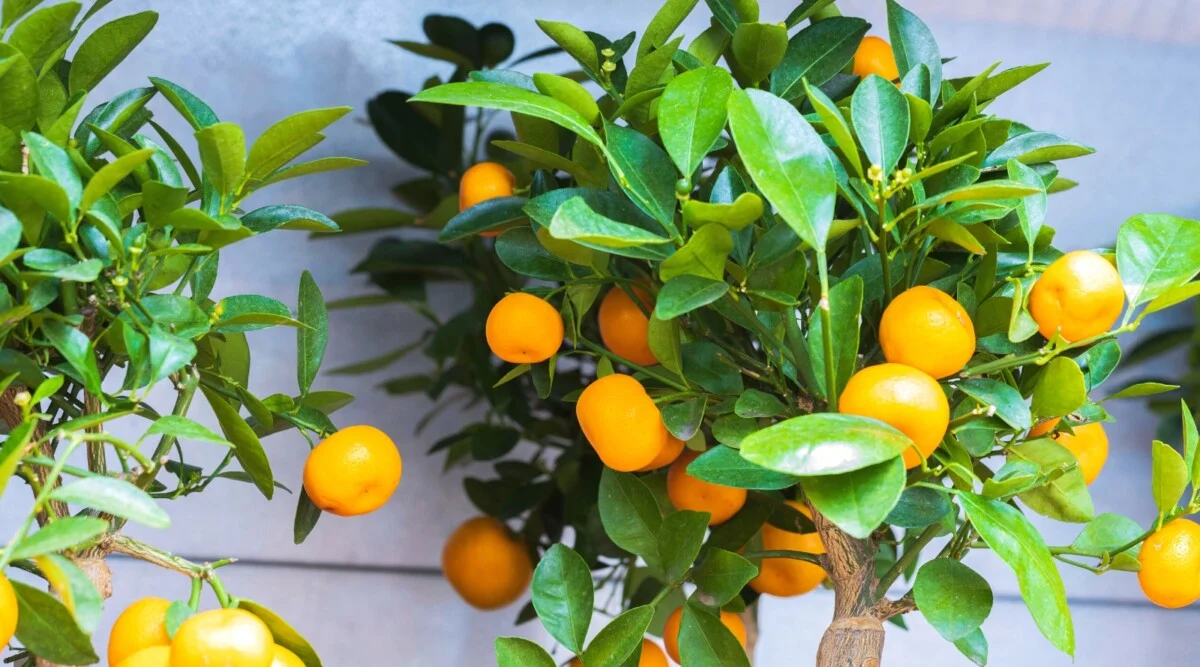Make your home feel like the tropics by growing these mini citrus trees indoors
Although most citrus trees grow too large to keep indoors, certain dwarf or small varieties can flourish year-round in containers. These plants are typically grown as decorative houseplants, but with ample sunlight and hand-pollination of their fragrant blooms, they may even yield small harvests of fruit.
If you’ve ever imagined growing citrus trees inside your home, here are 7 petite citrus plants worth considering—along with straightforward care tips to help them thrive.
01 : Dwarf Kumquats Are a Fantastic Choice for Indoor Citrus Growing

A timeless pick for indoor cultivation, dwarf kumquats typically remain under 3 feet tall. When pollinated, they consistently bear tiny, tangy fruits ideal for marmalades, cocktails, and other uses.
“The small fruits dangle from the plant like delicate ornaments, and they tend to appear in greater numbers compared to larger citrus varieties,” explains Justin Hancock, a horticulturist at Costa Farms.
To improve fruiting success, place kumquats where they’ll receive at least 8 hours of direct sunlight daily, and use a Q-tip or old makeup brush to hand-pollinate the flowers.
Want more gardening tips? Sign up for our free gardening newsletter for expert growing advice, troubleshooting tricks, and much more!
02 : The Variegated ‘Eureka’ Lemon Tree Is a Stunning and Fragrant Indoor Option

“My absolute favorite citrus variety for indoor growing is the variegated lemon,” says Hancock.
“Its leaves are edged in white, so you can appreciate the foliage even when it’s not flowering or fruiting,” he adds. “Plus, like most citrus, its blossoms are wonderfully fragrant.”
Encouraging variegated lemons to bloom can be challenging but achievable. Provide abundant bright light, feed with fertilizer formulated for acid-loving plants during the growing season, and—if possible—relocate your tree outdoors in warm months for maximum sun exposure.
03 : Australian Finger Limes Offer a Unique and Exotic Indoor Citrus Experience

For those who love the extraordinary, Australian finger limes are a standout choice. These distinctive mini trees produce slender, green fruits filled with tiny, juice-packed beads often used as garnishes or in cocktails.
Finger lime plants usually start in 10- to 14-inch pots and are repotted into larger containers as they grow. Acidic potting mixes work best for citrus, but you can also create a DIY blend by combining equal parts potting soil, vermiculite or perlite, and coconut coir.
04: Tangerines or Mandarins Can Be Grown Indoors with the Right Care and Attention

While outdoor tangerine and mandarin trees reach 10 to 20 feet, potted varieties stay much smaller, usually capping at 6 to 8 feet. Cultivars like ‘Owari Satsuma’ and ‘Tango’ are especially favored for indoor growth. Additionally, these plants are self-fertile, meaning only one tree is needed for fruit production.
Like other citrus, tangerines and mandarins fruit more reliably when moved outside in summer—but always bring them back indoors before temperatures drop.
05: Key Lime Trees Are a Reliable and Sweet-Fruited Citrus Option for Indoor Gardeners

Key lime plants fruit more dependably indoors than many other citrus types, and their vibrant green fruits are slightly smaller and sweeter than conventional limes.
These trees typically start bearing fruit around age 3 and, with proper care, may produce intermittently year-round. However, like other citrus, key limes may shed flowers and halt fruiting if they dry out. Prevent this by using a humidifier nearby to maintain 50–70% humidity.
06: Dwarf Meyer Lemon Trees Are a Highly Recommended and Productive Indoor Citrus Choice

It’s no surprise Meyer lemon trees are a top recommendation for indoor growers. They stay under 6 feet tall, boast intensely fragrant flowers, and yield sweeter-than-store-bought lemons. Plus, like key limes and kumquats, they fruit reliably indoors.
“In my experience, Meyer lemons are slightly more productive than variegated lemons but not as prolific as kumquats,” Hancock observes.
Bright light and consistent watering keep Meyer lemons healthy, though fertilizer can be beneficial. For a more tree-like shape, prune wayward stems in late winter or early spring with sterilized shears.
07: Calamondin Orange Trees Are a Petite and Versatile Citrus Option for Indoor Spaces

Most orange trees outgrow containers, but ‘Calamondin’ oranges stay compact, reaching about 4 feet tall. They produce tiny, tart oranges that can substitute for lemons in recipes.
Like other citrus, ‘Calamondin’ oranges thrive in direct sunlight (south-facing windows are ideal) and fruit better when placed outdoors in summer. Just inspect them thoroughly for pests, such as scale insects, before bringing them back inside in fall.

